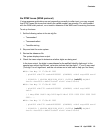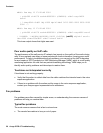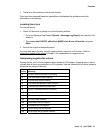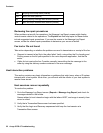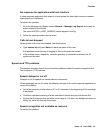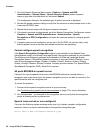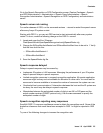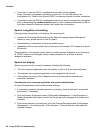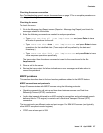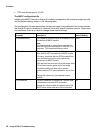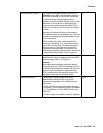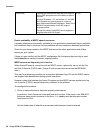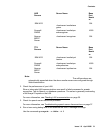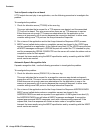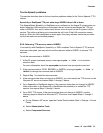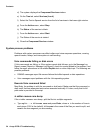
Contents
Issue 1.0 April 2006 27
Checking the server connection
See Troubleshooting speech server disconnections
on page 37 for a complete procedure on
checking and testing the connection.
Checking for errors
To check for errors:
1. Go to the Message Log Report screen (Reports > Message Log Report) and check for
messages related to the trouble.
2. Enter the following commands as needed to analyze operations:
― Type trace tsm chan all | tee /tmp/trace.out and press Enter to trace
all levels of operations for the call.
― Type trace tsm chan date | tee /tmp/trace.out and press Enter to trace
operations for the identified date. (Trace output will be prefixed by the date and
timestamp.)
― Type trace tsm chan VROP | tee /tmp/trace.out and press Enter to trace
voice response operations specifically.
The trace output from the above commands is sent to the console and to the file
/tmp/trace.out.
3. Place a call to the server.
4. Review the trace output for failure indications or error messages and take action to
correct the problems.
MRCP problems
This section describes how to find and resolve problems related to the MRCP feature.
MRCP connections and protocols
Avaya IR communicates with MRCP servers using the following protocols:
• Signaling requests for call set-up and tear-down between servers use Real-time
Streaming Protocol (RTSP) connections.
• Audio data (speech delivered to an ASR engine for recognition and synthesized speech
delivered from a TTS engine) is carried over a Real-time Transport Protocol (RTP)
connection.
The two protocols use different ports and port ranges. For IBM WVS servers (and typically
other MRCP-compliant vendor engines):
• RTSP uses a base port of 554



